The variations in horse markings are infinite and cannot be accurately described by a limited number of terms without specific arbitrary groupings. In some cases, a mixture of the terms given below must be employed. It is stressed that all certificates of identity should conform with the horse markings as described and accomplished by a diagram on which the markings are indicated accurately.
Most Common Horse Markings
Horse markings are one of the most important tools of identification for horses. The description and markings of horses invariably start with the forehead. The presence and position of the whorl or whorls should be specified concerning the midline and to eye level, and the position of white markings should be defined regarding the whorl.
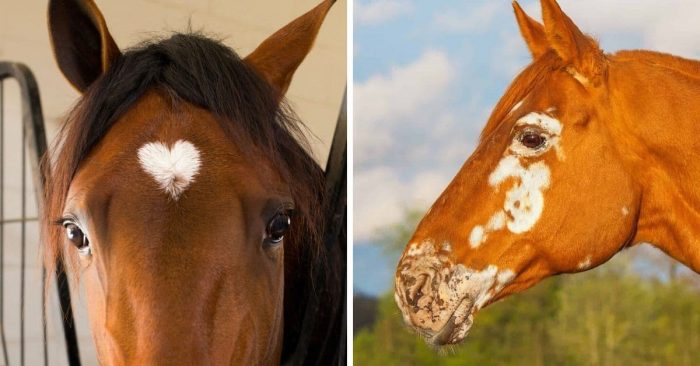
Types of Horse Markings
Markings are one of the most common methods of identification of horses. The marlins on the horse head, limbs, and body are mostly natural, congenital, and acquired.
1. Acquired Markings
Many good marks are permanent, e.g., saddle marks, bridle marks, girth marks, and other harnesses marks, firing, permanent bandage marks, and branding marks, surgical and injury scars, and tattoo marks. Where these occur, markings should be described. If a horse needs to be docked, this fact should be mentioned.
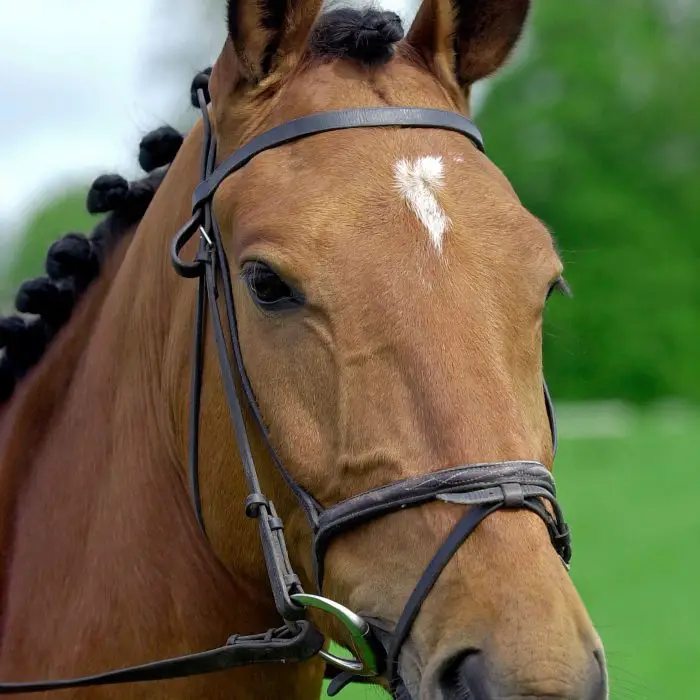
2. Congenital Marks and Abnormalities
Any congenital abnormality or marks or which cannot be included in the description under other headings should be clearly described in the horse certificate and indicated on the diagram where possible.
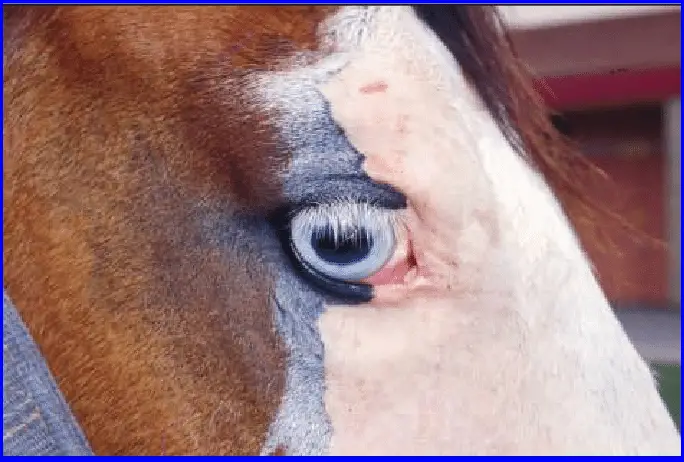
Horse Head Markings
Head markings are most prominent and widely described. They can be identified easily, seen from a long distance, and can be appropriately diagramed on a horse passport. The most common head markings are:
1. Star Marks
Any white marks on the forehead are called star marks. Size, shape, intensity, position, and colored markings on the white to be specified. Should the markings in the head of the center of the forehead consist of a few white-colored hairs only it should be so described and not referred to as a star?
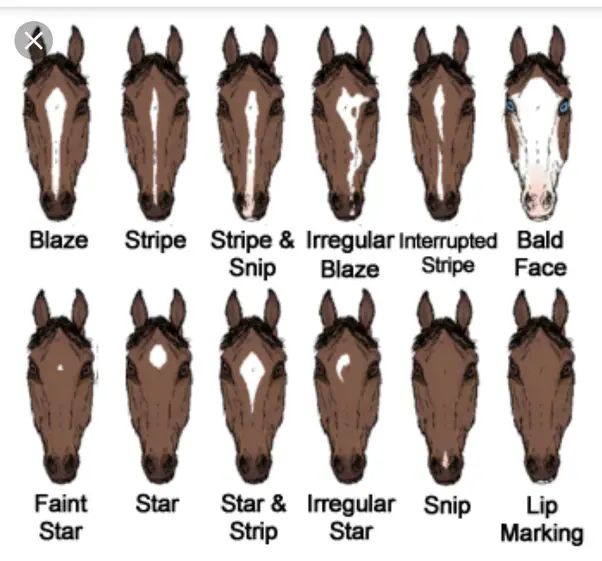
2. Stripe
The narrow white marking down to the face, not more expansive than the flat anterior surface of the nasal bones, is called stripe. In the majority of the cases, the star and stripes are continuous and should be stated as ‘Star and Stripe’; where the stripe mark is separate and distinct from the start, it should be described as ‘Interrupted strip.’ Where no star is present, the place of origin of the stripe should be stated. The end of the stripe and any variation in direction, breadth, and any markings on the white should be stated, e.g., ‘broad stripe,’ ‘narrow stipe,’ inclined to the right or left.
3. Blaze
A white marking covers almost the whorl of the forehead between the eyes and extends beyond the width of the nasal bones and usually to the muzzle. Any variation in direction, termination, and markings on the white should be stated.
4. White Face
Where the white covers of the forehead and front of the face, extending internally towards the mouth. The length may be unilateral or bilateral, in which case it should be described accordingly.
5. Snip
Snip is an isolated white marking, independent of those already named and situated between or in the nostril region. Its size, intensity, and position should be specified.
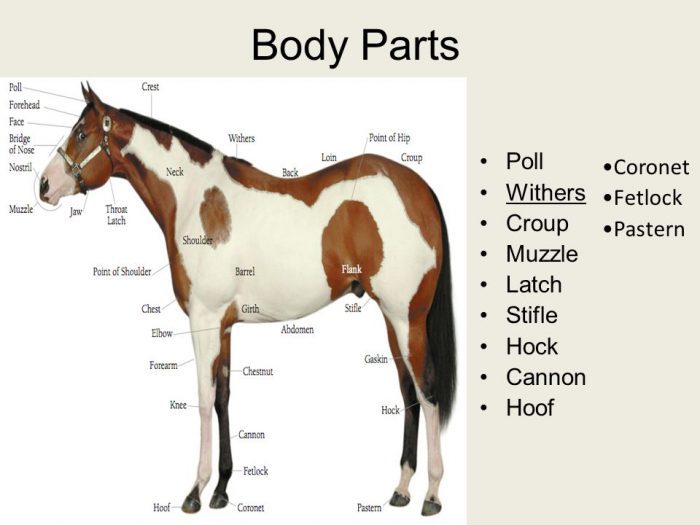
6. Lip Markings
It should be accurately described, whether embracing the whorl or a portion or either lip.
7. White Muzzle
The white muzzle is the white that embraces both lips and extends to the region of the nostrils.
8. Wall-Eye
This term should be used where there is such a lack of pigment, either partial or complete, in the iris, as usual, to give a pinkish-white or bluish-white appearance to the eye.
Horse Body Marks
Different markings on the body, both natural or acquired, are adequately stated on the diagram. The typical body markings are:
1. Grey-Ticked
Grey-ticked is the white hairs that are sparsely distributed through the coat in any part of the body.
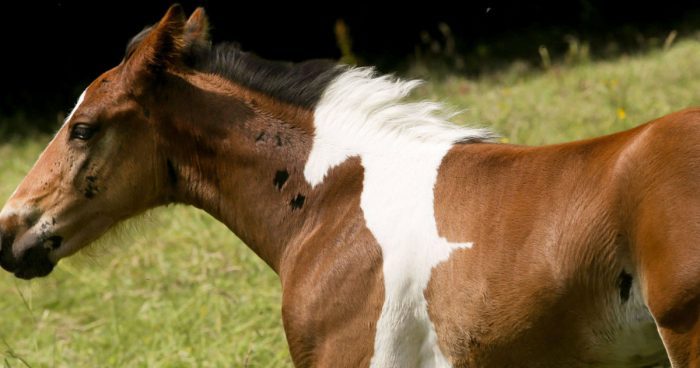
2. Flecked
Where mall collections of white hairs occur distributed irregularly on any part of the body. The degree of flecking may be described by the terms ’heavily flecked’ and ‘lightly flecked.’
3. Black Marks
This term should be used to describe small areas of black hairs among white or any other colors.
4. Spots
Where small, more or less circular, collections of hairs differing from the general body color occur, distributed in various parts of the body. The position and color of the spots must be stated.
5. Patch
The term should describe any large well-defined irregular area or hairs differing from the general body color. The color, shape, position, and extent should be described.
6. Zebra Marks
Zebra marks are the striping on the limbs, neck, wither, or quarters.
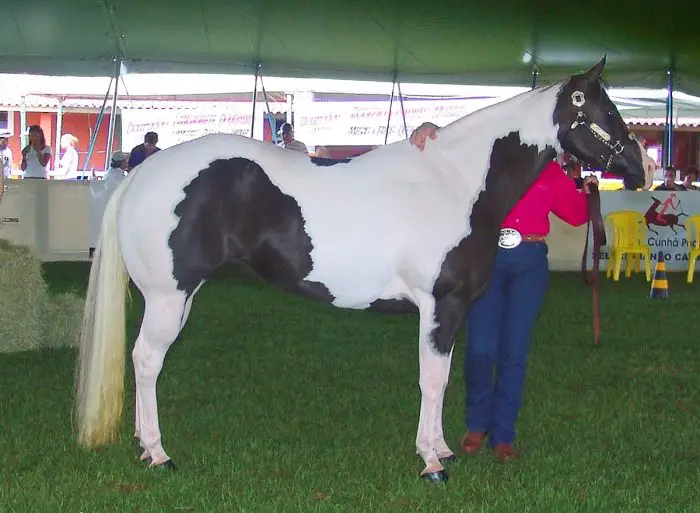
7. Mixed Body Markings
Mixed body markings are used to describe a white marking that contains varying amounts of hairs of the general color.
8. Bordered
To be used where a mixed border circumscribes any marking, e.g., ‘bordered star’ and ‘bordered stripe.’
9. Flesh Marks
Patches where the color of the skin is absent, should be described as ‘Flesh marks.’
Horse Limb Markings
Horse limb markings are an essential tool for the identification of horses. Limb markings are also easily visible and can be appropriately described.
1. White Coronet
Where the hairs immediate above the hoof is white, describe the situation of white markings as far as possible.
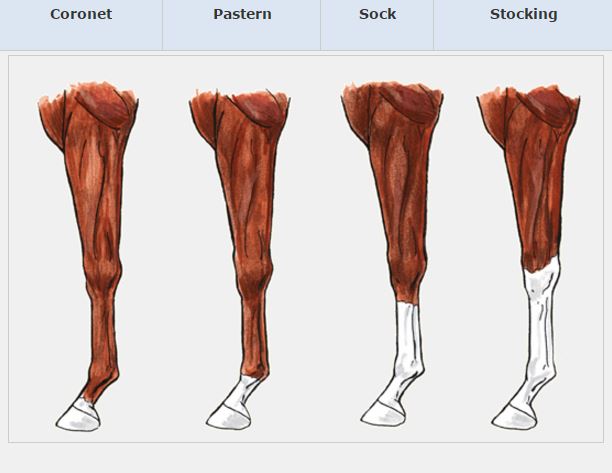
2. White Heel
For a description of marking, the heel is to be taken like the back of the pastern extending to the ergot. Where the white is confined to one or both of the bulbs of the heel, it must be so specified.
3. White Pastern
The ‘pastern’ is to be taken extending from immediately below the fetlock joint downwards for the description of marking. Any variation of the extent of the white should be specified, e.g., half pastern, three-quarter pastern.
4. White Fetlock
For the marking description, the term ‘fetlock’ is to be taken as comprising the region of the fetlock joint and downwards. Any variation of the extent of the white should be specified.
5. Higher White Markings
For the sake of more excellent uniformity and certainty, white markings extending higher than those already defined, the particular high to which the white extends should be specified precisely stated and variation in the upper margin noted, e.g., ‘white to middle of canon or shank,’ ‘white to knee’ or hock. The use of such terms as ‘sock’ and ‘stocking’ should be discontinued.
Horse Whorl
Recording the hair whorls is one of the simplest and most ancient methods of establishing the identity of a horse from birth. In the past, it has not been the practice to include a record of whorls in the description of racing and breeding stock, but this is now a requirement for all future registration in this category.
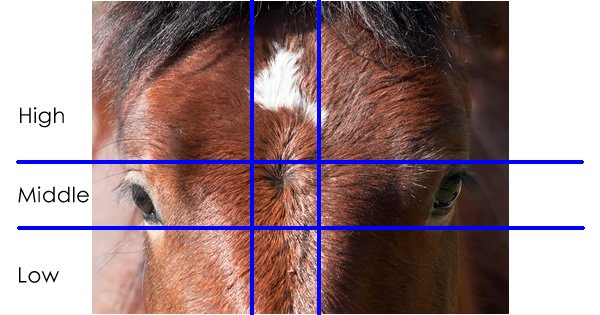
1. Neck Whorl
The neck can be divided into anterior, middle, and posterior areas. Whorls are found on or just below the crest. If at the poll by the base of the ear, they are not easily seen. The positioning may or may not be symmetrical on both sides. Frequent feathering will extend forwards or backward and may connect with another whorl. Occasionally a whorl or arrangements of whorl will be found on the side of the neck.
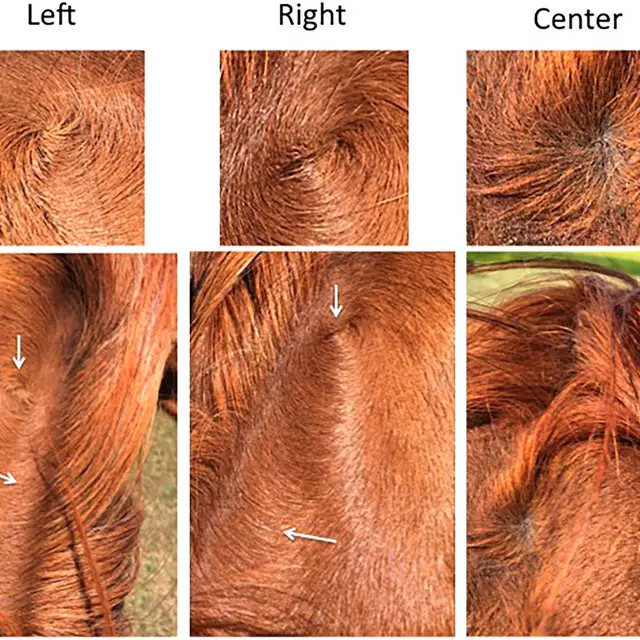
2. Body Whorl
If there are insufficient whorls on the head and neck to identify it in a whorl-colored animal, a resort should be made to record other whorls if present and distinctive.
Concluding Remarks on Horse Markings
Identification of horses is a prime requirement for the proper management of horses. The horse should be identified in races, competitions, sports, or trading. The horse can be identified by breed, sex, color, and markings. In my article, I have narrated the most common markings used to identify the horses.